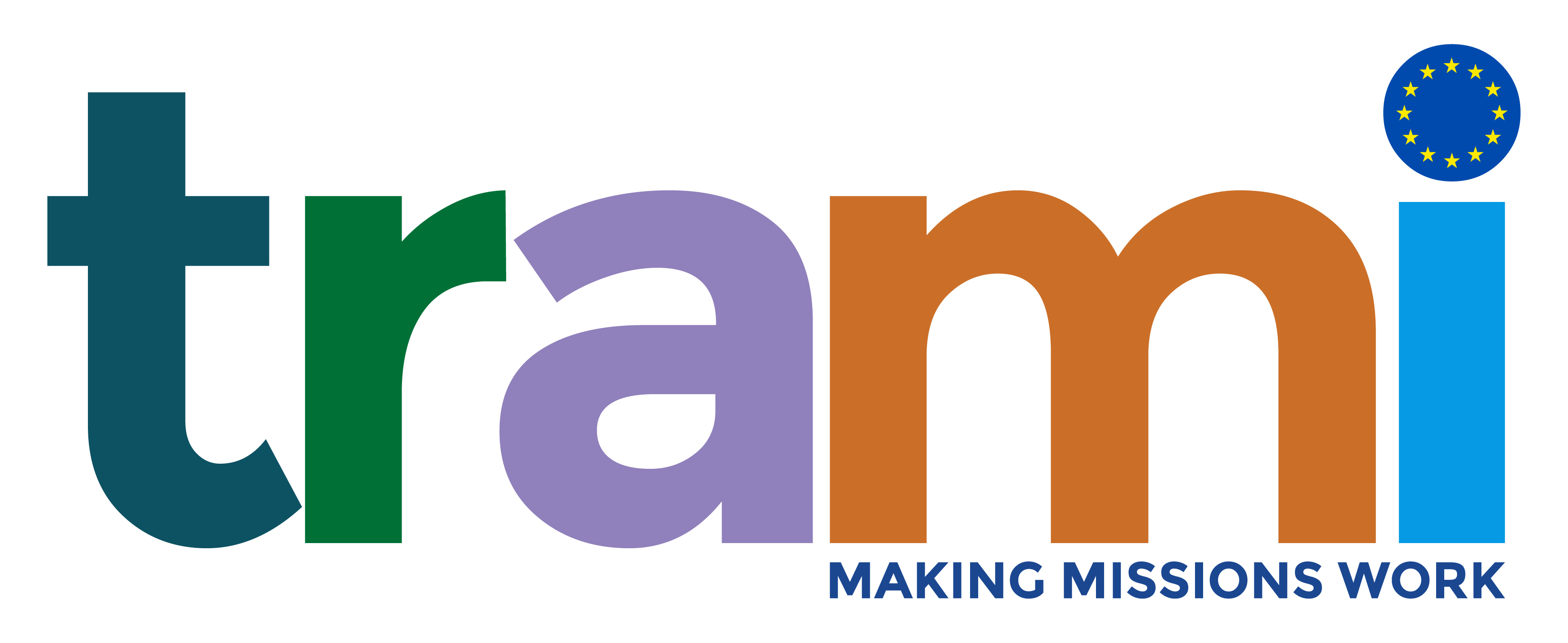Report on the sixth MLE with Taftie
How can innovation agencies support missions? How to engage industry specifically? Suitable incentives and instruments.
ORGANISERS: TRAMI (WP3) and Taftie
VENUE: Amadria Park Hotel Jure, Šibenik, Croatia
DATE: 15 June 2023
Introduction
TRAMI in collaboration with Taftie, the European Network of Innovation Agencies Taftie - The European Network of Innovation Agencies ran a mutual learning event (MLE) to explore the role of innovation agencies in engaging industry in the five EU missions. It provided an opportunity for the participants to hear an update on the missions and the TRAMI project, along with examples from several countries.
Objectives of event
The objective was to provide an opportunity explore how innovation agencies can engage companies in the EU missions. Innovation agencies are a critical link between EC, national governments and businesses in their respective countries.
Attendees
There were 23 participants taking part in the event, they represented 14 innovation agencies from 14 countries. This was an excellent representation of European agencies working directly with industry in their own countries.
Methodology
The event took the format of presentations and group discussions. The first two presentations focused on the missions and TRAMI project, followed by presentations from three countries.
Presenters
- Matti Hiltunen, Business Finland, provided an overview of the TRAMI project, its objectives, and the activities that have taken place to date.
- Wolfgang Polt, Joanneum Research, spoke abouth the EU Missions, addressing the background to the missions, the current progress and the challenges involved.
- Engaging companies’ country examples.
- Gráinne Ryan, Enterprise Ireland
- Matti Hiltunen, Business Finland
- Saske Hoving, RVO Netherlands
After the presentations the participants took part in a “brain walk” in three groups. This was an opportunity to address three key questions (Appendix 1), which the participants were provided with in advance of the event. Below please find a summary of the group’s outputs.
Summary of outputs of breakout groups
General Observations
- It is more difficult to involve industry in the missions than in other EU programmes.
- Awareness and an understanding of the concept of missions is key. Introduce industry mission ambassadors from both large companies and SMEs
- It is much easier to find obstacles and challenges than to find solutions, however the obstacles are often also the main benefits if they are overcome.
Question 1: As an innovation agency what do you see as the major benefits / opportunities to engaging companies / industry in EU missions?
- The most important benefit/opportunity/motivation for companies was seen as the market potential. This especially by accessing correct networks and value chains and, in some cases, getting into collaboration relationships with potential customers.
- It is an opportunity to align with new business opportunities, have a global outlook, and marketing opportunities.
- Also, R&D benefits were raised up meaning mainly the possibility to work with the best in the field and getting into a consortium carrying out huge R&D investments, far beyond what is done nationally.
- It can provide an opportunity for industry to influence the mission they are involved in.
- In general, collaboration benefits being the key gains, more important than the money.
- It could be a feather in the cap of a mission, if they manage to attract a famous company, who in turn can attract other companies.
Question 2: As an innovation agency what do you see as the major challenges / obstacles to engaging companies / industry in EU missions?
- The biggest obstacle is the lack of awareness or a misunderstanding among companies of the missions and what they do and offer. The missions are not a known concept.
- Often innovative companies identify interesting, attractive topics in the calls but are not ready to make the required level of commitment and get engaged. This is particularly true regarding the coordination roles. Putting in money / resources can be a challenge.
- The complexity and difficulty of it all, or at least a perception of complexity. This includes the risk and uncertainty, consortium, compliance etc.
- The national Horizon Europe support structures like NCPs are not themselves well enough informed to offer sufficient advice and coaching to mission participants. Also, often agencies cannot communicate the concept properly to industry.
- Other challenges include.
- Communication is key, particularly the benefits,
- Tangible profits are not obvious.
- Easier with a role in an advisory capacity
- IP can be an issue.
- Different implementation in different countries
- Long-term approach is difficult for some companies.
- There is not always a good relationship between business and politics.
Question 3: How to exploit the benefits and overcome the obstacles? With what kind of incentives / messages? Does your agency already have or plan concrete means to engage companies in EU missions? E.g., financial, and non-financial support.
- All starts with raising awareness. Awareness raising requires that support structures have sufficient know-how, resources and continues effort. It also takes time.
- Identifying and exploiting social influencers/respected forerunners. Meaning companies who do participate to missions and can act as magnets or ambassadors to attract others to follow.
- Bring together different actors and perspectives.
- Financial incentives help but are not enough, the business case is the main driver.
- Introduce Mission Ambassadors from industry (from large corporations as well as from SMEs) to promote the concept and hopefully share their success stories.
- Log in to post comments

